By: Ricardo Roy A. Lopoez
Last Wednesday (June 5, 2013), Davao City, Philippines experienced one of the worst floods in its recent history. Numerous areas around the city were flooded. The flooding caused hundreds or maybe even thousands of commuters to be stranded in the downtown area. The downpour was so bad that jeepneys were filled to their capacities while taxi drivers refused to accept passengers out of fear that their vehicles might get caught in the flood. Thanks to Facebook, I have read some allegations that people had to walk in a waist-deep water just to get home. On the other hand, I myself was able to go home past midnight. My problem started at around 7:30 in the evening. It was the end of my shift and I had to catch up with my relatives at a Japanese restaurant (Nonki, F. Torres St., Davao City). As the downpour was quite heavy, I was not able to hail a taxicab. I called my mother and she told me that she asked one of my cousins to pick me up from the office. After a few minutes, my cousin called me and said that the high water level at F. Torres St. has made it impassable. With this, my mother called me again and I was told to stay at the office as they will wait for the water to subside. So they could pick me up. So I decided to wait inside the office for my relatives to fetch me. After 30 minutes, I decided to call my sister and ask for updates. I was told that the water level was still too high for the vehicles to pass and that I should just find a nearby restaurant so I can take my dinner. At this point, I went downstairs to look for a restaurant and saw a colleague who was just waiting for the rain to stop. This fellow employee told me that the Jolibee restaurant 3 blocks away was still open. So we decided to share my small umbrella and slowly made our way to this restaurant. As we walked along San Pedro St., we were shocked to find that it was partially flooded to the point that some stranded commuters started removing their office shoes. It was also becoming clear that a lot of people were still unable to go home. As we approached Jollibee, we realized that it was already closed. We decided to head to the nearby Chowking restaurant which it turns out was also closed. With this, we decided to find another restaurant. I suddenly remembered a nearby Dunkin Donuts restaurant. I then told my colleague that we should spend our time there. When we approached the donut store, we were relieved to find out that it is open for 24 hours and still had some vacant tables. With that, we decided to go inside and wait for the rain to slow down. We ordered our meals and talked for a while. With this, I decided to call my sister and mother to update them on my current location. I looked at my watch and was horrified to realize that it was already 9:30 pm. 30 minutes later (10pm), the rain had stopped and my friend decided to go home. I realized that a lot of people were going to Dunkin Donuts so they could use the restroom. However, the employees told them that there was no running water in the establishment. It was not clear if the lack of running water was related to the floods. An hour later (11pm), I once again contacted my mother and sister. I then decided to walk the streets of San Pedro to find a taxi. When I left Dunkin Donuts, I was shocked to find that some commuters were still stranded. As I walked, I realized that a lot of empty passing taxis refused to stop for anyone. This is probably out of fear that their units will be forced by passengers to traverse impassable routes. I then decided to try to find a taxicab at Quezon blvd. To my surprise, the streetlights were out which made it hard for me to spot a taxi. As I waited there, I saw a jeepney that was already full of people. I also decided to call some taxi operators from my cellphone. All of them told me that they no longer have units. With this, I lost hope that I could still find a taxi in this part of the city. Hence, I returned to San Pedro Street. To my surprise, my mother called me. I was told that our neighbourhood (Juna Subd., Matina Crossing) might be flooded and experiencing power outage. I was then instructed to head towards our clan’s apartment somewhere along Quirino blvd. As I was walking near the police barracks, a taxi noticed me. As I rode into the taxi, I informed the driver about my destination. He was quite hesitant as the said blvd might still be flooded. However, I told him to try and see whether the road is passable or otherwise. To our surprise, the waters have already subsided. As I arrived at the dormitory, I called the attention of the guard and stayed at the management office. After a few minutes of my arrival, the guard told me that my mother already called. By this time, one of the dorm’s attendant informed me that the room upstairs was already prepared. However, I refused to stay in the rooms because it was an exclusive ladies’ dormitory. So I brought a couple of things from the nearby convenience store and waited for my relatives to arrive. At around 30 minutes past midnight, my mother, sister and other relatives arrived. My aunt called the Davao City Central 911 to ask for any updates with our neighbourhood. We were informed that electricity has resumed and that the water has subsided. We then decided to return home. As I got home, I was could not help but think about those living in the flood-prone areas. I was sure that they were already evacuated. I somehow wish that they would be okay. With that, I realized how lucky I truly am. I took a shower and called it a day. One heck of a day indeed.
Recommended readings:
By Ita PravitasariPravitasari is a senior student in Universitas Indonesia. Besides her major is psychology, she also spend her enthusiasm in another fields that excite and challenge such as philosophy, women's issues, child protection, disaster education, and youth's issues. Feel free to share your views about anything with her: [email protected] On this second memorial of the Great East Japan Earthquake 3/11, I would like to share my experiences when I visited Sendai city last summer. I had opportunity to hear stories directly from the survivors and their families about what happened during and after the tsunami struck Sendai. I also had opportunity to see the area that was destroyed by the tsunami. There are stories about grief, loss, and resurrection. Those are the stories behind debrises that I had seen there. Junko’s Story
When the tsunami struck, Junko was in the office which is located quite far from the coast. However, her mother lived in a location that quite close to the beach so that even if she survived, she was very concerned about her mom’s condition. Shortly after she allowed to visit the area where her mother lives, she rushed to go there. When she got to the location where her home was, Junko saw her house was destroyed and she couldn’t find her mother there. Then from that day until a few days after, she traveled from one shelter to another shelter to look for her mother. She had doubts about whether her mom still alive or not. Fortunately, Junko finally able to find her mother in one of the shelters. Her mother told Junko that once she received a tsunami warning, she immediately rushed to the car and drive away from the house. Interestingly, after having met Junko, her mother told Junko to not be worrying about her and asked Junko to return to workplace because Junko works on the support center for foreign nationals who offers support and promotion to Miyagi citizens that are internationally active. Her mother consider that Junko must be able to also help foreign nationals who may be experiencing some difficulties after the tsunami hit.
Even so, not only sadness that was behind the ruins of the buildings in Sendai, but also amazing stories about how the Japanese remain civilized despite of they’re being in the midst of difficulties. The story about the survivors that queue orderly while receiving aid already reported a lot. But, I had never heard of this story that was told by Junko and for me this story was very evocative. Shortly after the tsunami struck, the survivors need foods and clean waters. At that time, many kombini or convenience stores like lawson, family mart, and 711 opened their warehouse and invited the survivors to pick up foods and drinks for free. Interestingly, a few months after the incident, many survivors returned to those kombini to pay for foods and drinks that they had taken though the kombini had confirmed that those foods and drinks was provided free of charge.
Story from Yuriage JHS
Like I said before, I also had time to see the area that was affected by very severe damages, including Yuriage secondary schools. At the front of the school, there was a table that contains text “maybe we can forget the tsunami, but we will not forget our 14 friends (who became victims in this incident).” This made me realize that disasters may cause psychological problems and this sense was confirmed also by Mrs Iizawa, a member of Tomodachi in Natori International Association, a volunteer group that involved in the provision of psychosocial support for the survivors.
Mrs. IIZAWA Hiromi’s Story
Stories that was told by Mrs Iizawa are about how she and her colleagues from Tomodachi in Natori International Association providing psychosocial support to the survivors for several months. They’re living with the survivors as well as to provide support for them and that’s not an easy thing to do. Challenges that were faced by them are from rejected by the survivors to dealing with survivors who have lost their enthusiasm for life. They hold a variety of activities for the survivors such as the tea ceremony, musical performances, dance course, etc that are considered to enhance survivor’s passion to live
In the end, I want to stated that behind the debrises in Sendai, stored a variety of stories. until now, from the news I read on the internet, the stories still exist. a story about loss, about healing efforts, and another stories which show to us that after the disaster struck, not only the buildings that collapsed but also the survivors. That’s why we need to build disaster resilience and I cite Mr. President’s remarks who said that disaster resilience should be made as one of the national building blocks for sustained prosperity. you can also access this writing at http://itapravita.wordpress.com/2013/03/10/311-the-stories-behind-debrises/
By: Haruya Nihei In this my first article, I introduce my Japanese friends’ project, which is implemented this year. They participated in “Looking Beyond Disaster 2: UNESCO Forum” last year and made a project group and action plan called “Share Disaster Memories”, which is available on the Internet ( UNESCO Bangkok). In order to proceed with the action plan they started to cooperate with another volunteer group consisted of Japanese members of YWCA (Young Women's Christian Association). This group has the experience of providing a meeting place to the victims in Fukushima, allowing them to communicate freely. Consequently they have shared their ideas in order to plan bigger projects and made up the new action plan which is called “Project: Connect the young voices from the earthquake disaster to the future”. The other day I met Tsuyoshi Sotoya, who is the core member of the project as well as a participant of the LBD2 and interviewed about this project in detail. He is originally from Kobe, where there was a big earthquake in 1995, and now he is a university student in Tokyo. I will now introduce the overview of this project based on the interview with Tsuyoshi and their proposal paper. Briefly, they offer the place where young victims and non-victims can meet and share the experiences of the disaster as well as the current situation of affected areas. Through this project, they aim to accomplish: 1. Building a wide network of young people who would like to share their experiences and impressions of the disaster or the current situation of the affected area 2. Offering the place to let young people think together deeply about themselves and the future of their society 3. Long-term help for the victims and the affected areas Then, why did Tsuyoshi’s group believe that these three points are needed for the victims and the affected areas? They judged it from the real voices of young people, both who was affected by the disaster and who was not. There is the fact that people’s interest in the disaster has gradually faded away as time passed. But the affected areas have not been recovered yet and still need long-term help. Therefore, the victims would like to let other people know about the current situation and revive their interest to the state following the great disaster. There is also the fact that there are young people who have never experienced the disaster and want to know the circumstances regarding the tragedy, which they hardly know from media. Also, people who evacuated from Fukushima to other places after the disaster want to be updated about the situation in their hometown. Hearing those voices, the project group thought offering meeting places might satisfy their needs as well as let the victims tell someone what they have on their mind concerning the disaster and release the stored trauma. Regarding the second point, the project group thought not only sharing their experiences but also thinking what they can do for their community might bring them to find a goal and hope towards their future. Concerning the third point, time lets people forget what they have experienced and felt from the disaster, hence it is important to write down and record their memories in order to pass them on to the future generations. The project group believes that this is what people need in Japan today and this project will satisfy those needs. The project group also received sponsorship from a Japanese foundation and will officially start to implement the project this year. The proposed regions to have the meeting spot are: Fukushima, Miyagi, Hyogo, Tokyo and Osaka at the moment. With these final words from the interview with Tsuyoshi I would like to take the opportunity to wish them good luck and hope that they will achieve their goals. Me: “Why did you start this kind of reconstruction work?” Tsuyoshi: “Because I just wanted to be of help to the victims even if only slightly. And I myself have wanted to discuss about the society after the disaster and share the opinions with young people of my generation” Please feel free to leave comments or suggestions to this project. It would help them a lot. And if you want to take part or get involved in the project, please contact us.
Last Dec. 21, 2012, the National Youth Commission and RockEd Philippines conducted relief operations in the municipalities of the Province of Compostela Valley, namely New Bataan and Monkayo. For the municipality of New Bataan, the convoy turned over to the municipality disaster relief command post 120 sacks of relief goods from the Department of Social Welfare and Development XI (DSWD XI). In addition, the group also distributed an estimated five thousand (5,000) pieces of toys to the children in the numerous evacuation centers in the municipality of Monkayo.
The convoy was composed of 13 people. The RockEd Philippines group was lead by Ms. Gand Badoy while the National Youth Commission contingent was lead by two commissioners namely Asec. Gregorio Ramon A. Tingson and Asec. Georgina P. Nava. The group left Waterfront Hotel at around 6:30 in the morning. They then proceeded to the Inter-Agency Relief Operations (IAROC), DPWH Depot, Panacan, Davao City to accept one hundred twenty (120) sacks of relief goods intended for the municipality of New Bataan.
Upon arriving at the province of Compostela Valley, rain started to fall. This became a point of concern since most of my contacts assured me that people proceeding to the area need not worry about mud. Upon arrival at the command post, I immediately approached the officer in-charge and showed them our documents. We asked them about the procedures for donating goods to the areas. They told us that we had two options. The first option was to simply leave the donations to the command post and they will take charge of distributing it to the communities. The second option was for them to guide us in distributing goods to the areas. Due to time constraint, we opted for the first option.
While the truck was unloading its relief goods, some of us went to look for a comfort room as one of us needed to use it. We went around the compound. We stumbled upon what looked like the municipal gymnasium. Some portions of its roof were probably blown by the wind. While inside the gymnasium, I saw a bunch of spoiled bananas. I then remembered the probability of the Typhoon actually affecting the production of bananas. This in turn can drastically affect the livelihood of the people.
After a few minutes of walking, we finally found a small stall that could be used by the women in our group. Describing the stall as “dirty” would truly be an understatement. To my surprise, a man seeking shelter at a municipal building lent his assistance. While waiting for one my female colleagues to finish, Comm Gio started a conversation with the man. I wasn’t near enough to actually hear what they were talking but I noticed the man’s tone. I was expecting him to be sorry and sad. To my surprise, he sounded very casual and if my memory serves me right, he even gave the commissioner a smile.
After we all finished doing our own business, we then proceeded to one of the main roads in the Poblacion. We found a wall that said Babangon Tayo! New Bataan! I was surprised at the resiliency manifested by this message! These people refuse to mourn for their losses and instead want to focus on rebuilding their community.
As we returned to the command post, we had an opportunity to have some light casual conversation with an army officer. He told us that contrary to what the mainstream media reported, the municipality of New Bataan is free from illegal logging and mining in contrast to other areas in the province. Despite the absence of such environmental degradation, this town still suffered the brunt of the typhoon. The officer also narrated how difficult it would be to attempt to evacuate people from the said town. He also reiterated the difficulty of rebuilding the livelihood that people lost from the typhoon.
After the unloading of goods was finished, we then proceeded to the municipality of Monkayo. After an hour or so, we arrived at a public school-turned evacuation center. As we had the children lined up for the distribution of toys, I felt cold winds swept by me. I looked at the sky and it was grey. I feared that it might rain soon. I just ignored my fears and decided to just focus on the task at hand. After a few minutes, my fears became a reality. It rained hard!
I looked back at the trucks and saw our female companions running under the rain. But the instructions given to me were simple and absolute: my only task was to distribute the toys, retrieving them from the truck is not part of my task. In addition, I feared that if I left my post, some of the children might break the line and chaos would ensue.
As the toys distribution commenced, the rain started to get stronger and everyone got wet. The toys were so varied that after a while some of the children became too choosy. Luckily, some of the locales cooperated with us and helped in telling the children to just receive the toys.
After a few minutes, we decided to leave. As I approached the truck, I was surprised to find a lot more boxes of toys that needed to be distributed. Our commissioners’ contact (a TAYO alumnus) volunteered to lead us to some evacuation centers where we could commence toys distribution. We were able to visit two more schools in the town of Monkayo. We then realized we had one more box of toys. We then decided to just turn them over to the provincial government.
When we arrived to the provincial capitol, I was surprised to see some portions of the capitol’s roof to be missing. This just proves how strong the typhoon was; even the provincial capitol was not spared from damage! After turning over the goods, we proceeded to eat our late lunch and proceeded back to Davao City. We stopped by the IAROC to give them the RIS form.
At the IAROC, we were only supposed to drop the RIS form. However, Ms. Lorela Ramos from the DSWD XI introduced yours truly Comm Georg to another Social Worker. The Social Worker conveyed to us her gratitude in our assistance to the IAROC in the relief operations. She also narrated how sad she was to see the pictures of the destruction in New Bataan. After a few minutes, we decided to return to the Waterfront Hotel and decided to call it a night.
|
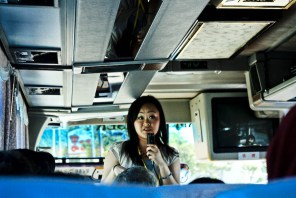
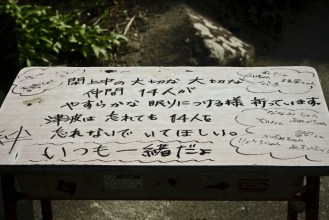
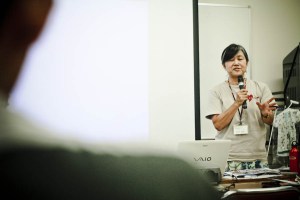
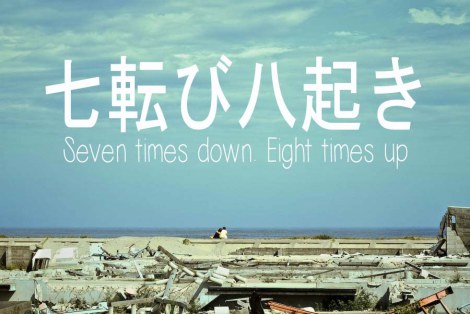
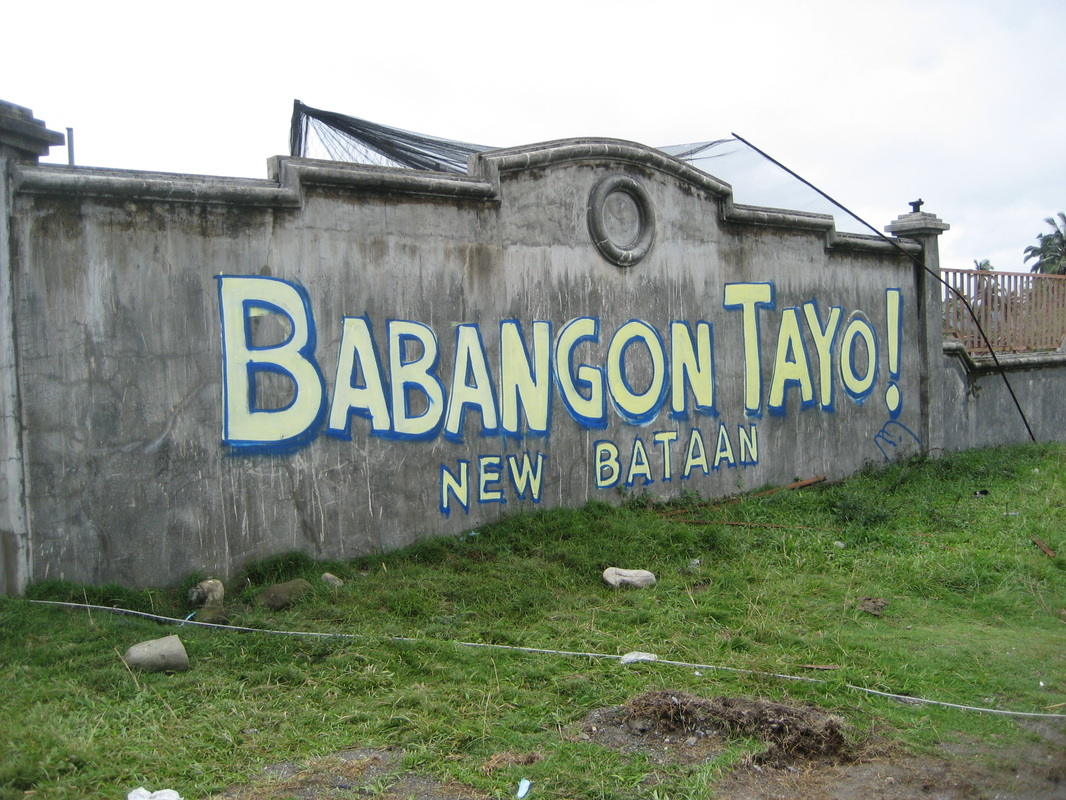
 RSS Feed
RSS Feed